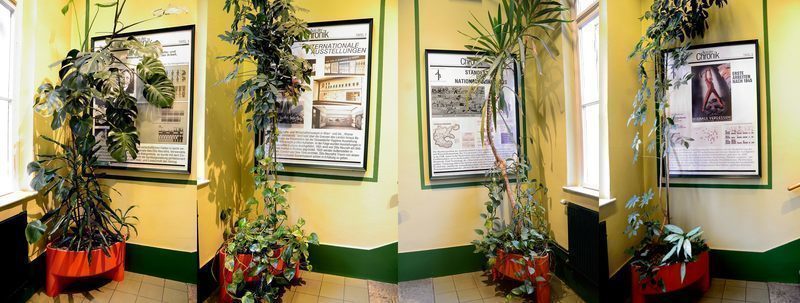Research phase 2, by the Vienna research group
Researchers
: Carla Bobadilla, Andrea Hubin, Barbara Mahlknecht, Karin Schneider
Research string(s)
: models of critical pedagogy; activation of historical experiences
Hans Tietze was an Austrian art historian born in 1880 in Praha, he died in 1954 in New York. Coming from an assimilated Jewish family he and his wife Erica Tietze-Conrat, who was the first female graduate of art history in Vienna, were forced to exile after the “Anschluss” (occupation by Nazi Germany) in 1938. Tietze was not only a multifaceted art historian and cultural scientist but also active for the educational department of the new Austrian republic from 1918 till 1925 and sympathizing with the social-democratic government of “Red” Vienna´s municipality. Helping to reorganise art museums after WWI and teaching art in social housing buildings for working class people he shared the Austro marxist utopia of public learning through art; Erica Tietze-Conrat lectured on the way of image interpretation she learned from the artist and later important Bauhaus lecturer Johannes Itten in his courses in Vienna. An important figure in this context is the artist educator Franz Cizek, who invented the Child Art Movement in Vienna, opening the Juvenile Art Class in 1897. Starting with a research on this environment/network of reform pedagogy and popular art education through art as a part of (socialist?) utopia, we ask where and how the ideas and construction of “the (primitive) other” are interwoven with the figure of “the child”. We ask how exactly these construction of “the other” via primitivism and exoticism are a basic ground for social utopia in Vienna. We will follow the hints in published and otherwise documented statements on pedagogical concepts and didactic image policies in exhibition catalogues promoting an idea of modern art “for all”. We will follow the writings of early art educators and search for the appearance of these constructions in contemporary art education concepts.
These (socialist) utopias of the late 19
th
and early 20
th
centuries are connected with the idea of the “new human being” (der “neue Mensch”): Via education on hygiene, self-care, nature experiences (“Naturfreunde”) and eugenics (qualitative birth control) people should learn to optimise themselves for their own good and the development of a better man-kind. These kind of self-improvement fantasies provided junctions with the concepts of Racism and National Socialism. The art education activities and the concepts of “culture learning” through aesthetics and architecture played a crucial role in these socialist educational programs. Hence we seek to contextualise our research within broader aesthetic/educational focus of the Social Democratic Vienna policies in the 1920/early 1930s, as for example represented in Otto Neurath’s Isotype symbolic language and its embedded construction of social stereotypes.
Looking also at the social housing approaches of Vienna in the 1920s we try to find connections to Allende’s Chile of the early 1970s where fascism put an abrupt end to these kind of aesthetic and social utopia, as well. The research project we will include artist Leonardo Portus to reconstruct traces of hidden visual utopia of this time in Vienna and Chile.
The practice based case studies include e.g. the foundation of the institute of arts education at the Academy of Fine Arts in Vienna in 1941 by the Nazis and the history of a school in Vienna that was established as “model” school for working class female students in the 1920, following a social-democratic paradigm of learning through arts and creativity. During the Nazi time this school came to be established as a Nazi elite school for girls (NAPOLA) also with an focus on arts education. After WWII it became again a model school for “learning through art” by the social democratic government in Vienna and it holds this unique position till today.

